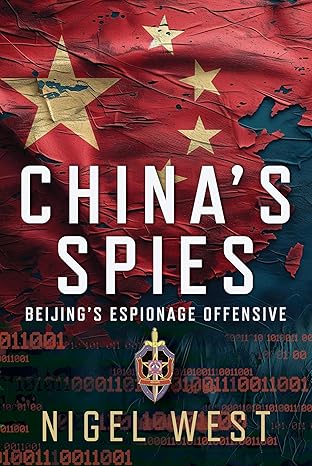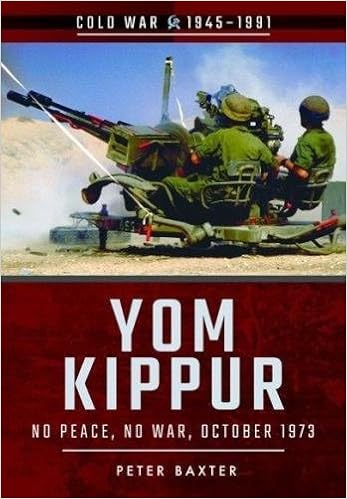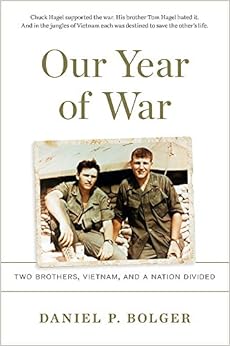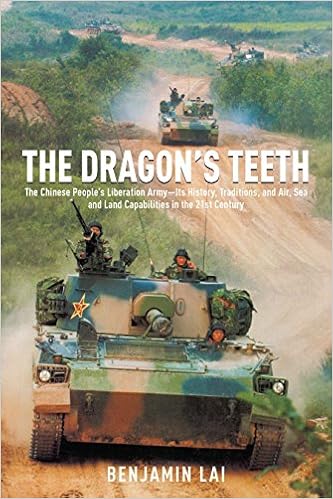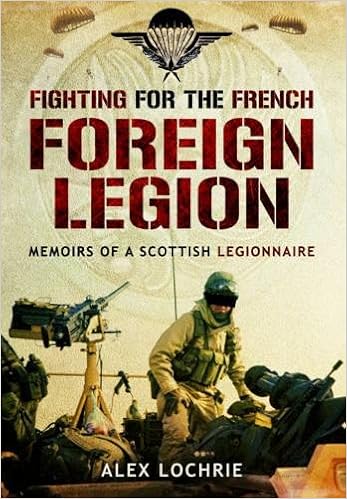A Summary of U.S Nuclear Policy World War II to SALT
By HD Bedell
United States (U.S.) nuclear policy and strategy changed dramatically in the early years following WWII. Policy evolved from the view that nuclear weapons were a powerful tool for war and policy to the view that nuclear weapons had no utility and were a Pandora's box to be isolated from all other national interests.[1] In the end, nuclear management became a strategic policy around two themes: preparation and disavowal.[2]
Following Hiroshima and Nagasaki and the end of the war, nuclear weapons did not figure prominently in U.S. foreign policy. Several factors contributed: (1) Technological scarcity made them rare instruments of war; (2) the U.S. possessed a monopoly on an item with undetermined implications; and (3) the U.S. was not entirely comfortable with what it had wrought.[3] The seeds of disavowal were sown and the first fruit was the Baruch Plan.[4]
The Baruch Plan was not an altruistic plan; it was assumed that the U.S. nuclear monopoly would not last beyond five years and the plan would essentially freeze the world in a situation with one nuclear power–the United States. For this reason, the Soviet Union rejected the plan until such time as the U.S. destroyed its existing stockpile of nuclear weapons, and, of course, the United States refused. Still, the Baruch Plan was the beginning of the intent to control nuclear weapons.
Bernard Baruch, the U.S. representative to the UN Atomic Energy Commission (UNAEC), presented the proposal to the first nuclear weapons negotiation meeting in history, with the opening words: “We are here to make a choice between the quick and the dead. That is our business.”[5] It would be hard to imagine a more potent introduction. The plan contained the two proposals. The first was the control of nuclear weapons, i.e., disarmament by preemption, and the second was the exploitation of nuclear energy by all of mankind. These proposals were based on two assumptions: (1) There are no defenses against nuclear weapons; and (2) energy availability was the key to world material development. The United Nations General Assembly (UNGA) retains these assumptions. Ironically, the U.S. eventually accepted the case against nuclear weapons and rejected the case for nuclear energy. Transposing the decisions would have made things easier for U.S. security, but America became anti-nuclear in every respect. The Plan also proposed the International Atomic Development Authority (IADA), the precursor of the International Atomic Energy Agency (IAEA).
Under the Baruch Plan the IADA would: (1) be created within the framework of the UN and be politically responsible to the Security Council and the UNGA; (2) control all “intrinsically dangerous activities” in the nuclear weapons field; (3) own and control sources of critical materials and installations; (4) carry on research so that no nation could surpass it in nuclear technology; (5) license all nuclear activities; (6) distribute weapon stockpiles so that no nation had a preponderance of weapons; (7) control design and capability of energy projects; (8) and have inspection authority. The issue created by the Baruch Plan was, aside from Soviet strategic concerns, national sovereignty. It essentially made the UN responsible for nuclear security and by doing so made the UN responsible for national strategic viability. The Baruch Plan failed in 1949 when the Soviet Union detonated their first nuclear weapon.[6]
The Truman Administration recognized the strategic significance of nuclear weapons early in the Cold War and ordered additional nuclear weapons production. Increased production and presumed deployment had tremendous strategic significance to the Soviet Union, particularly so since the United States possessed a nuclear monopoly until 1949. The monopoly, however, in addition to being short-lived, also was insufficient either to preclude Soviet aspirations of superiority or to make such aspirations technically infeasible. Meanwhile, the Truman Administration endeavored to provide the United States with a sound technical base until the nuclear effects on international politics could be assessed.[7] These efforts came to fruition in the Eisenhower Administration and provided a wide range of options.[8] Strategy, however, became separated from diplomacy and from the analysis of interests, values, and motives as well–all the things that should be in concert. The net result of this separation and the ensuing doctrines was that three decades later President Ronald Reagan publicly conceded the Soviet Union's military superiority.[9]
The question is: How did this happen? The United States certainly had the capacity to maintain nuclear strategic superiority and did so until the early 1970s. The early 1970s saw the advent of Soviet superiority, codified U.S. inferiority in the first Strategic Arms Limitation Talks (SALT I) agreement, and Mutual Assured Destruction (MAD) doctrine between the United States and the Soviet Union.[10] However, the codification was unilateral; the Soviet Union never accepted the doctrine as defined by the United States. Further, by codifying MAD, U.S. policy makers settled the theoretical debate of strategic nuclear weapons utility by locking the United States into an inequitable agreement that precluded any strategy except MAD. In effect, MAD became a self-fulfilling doctrine. It was not a strategy, although its predecessor Assured Destruction may have been. It may be that MAD was only a condition.[11]
It seems clear that disavowal became the predominant theme even though the U.S. arsenal grew in strength and diversity through tremendous technical advances in weapons development throughout the 1950s and 1960s. The 1960s were especially significant in accuracy improvements and development of Multiple Independently-targeted Reentry Vehicles (MIRV)s. Still, no one seemed to be answering the question: What do you want the strategic nuclear forces to do? The answer seemed to be that strategic forces had only to exist as a deterrent; their employment was forsworn.
The evolution of U.S. nuclear strategic doctrine, in a certain aggregate sense, represents the much-touted qualitative difference of nuclear weapons. This difference, which is largely one of perception and doctrine, probably is derived from the extensive civilian-academic influence on strategic policy. This development was not paralleled in the Soviet Union. In the Soviet Union it was “a revolution in military affairs.”[12]
Nuclear strategy evolved in the 1950s. In 1953, President Eisenhower directed the development of plans to use nuclear weapons as a force multiplier, a “New Look.” This was done following the 1952 Lisbon conference that set North Atlantic Treaty Organization (NATO) conventional force requirements at 90 divisions, an investment the allies either would not or could not make. It left a lasting impression on the development of NATO, the combination of deterrence and defense. Massive retaliation became synonymous with the Eisenhower Administration, but it should be stated that it was not necessarily part of the New Look pursued by Eisenhower. As it evolved, it was stated that transgressions by the communist bloc, either the Soviet Union or China, would incur retaliation by the means of U.S. choice and at the time and place of U.S. choosing. The wide interpretation was that the U.S. would respond to aggression anywhere with a massive nuclear strike. In reality it was a scheme of deterrence that included extended nuclear deterrence on vital interests, which at the time meant Western Europe. A level of non-nuclear deterrence was developed for non-vital interests.[13]
The concept of deterrence in general was not especially new; it had been applied to battle ships and long-range bombers prior to World War II. The factors that brought deterrence into the nuclear age were the perceived finalization of military technology and the literal quantum leap in quantitative destruction capability nuclear weapons imparted to the wielder. The proponents of deterrence varied in their reasons for advocating it in the nuclear age. Some, like Liddell Hart, considered nuclear weapons too destructive to have a viable use in war and advocated limited war capability, at a lower level of technology, in addition to deterrence. Others, like Bernard Brodie, considered that the military equation had changed entirely and that the new purpose of any military was not victory but was instead prevention of war by deterrence. The advocates, as well as those who simply saw no other choice, varied in their expectations of deterrence; some were optimistic, others were not. All had an effect upon the development of the United States nuclear strategy and the means by which that strategy would be implemented. Retaliation, however, was the common premise.
During the era of John Foster Dulles the U.S. certainly had the capability and reason to engage in massive retaliation or, at least, tactical use of nuclear weapons. Yet, nuclear weapons were not employed in either strategic doctrine or tactical support. It could be argued that this was the end of the Soviet perception of willingness on the part of the United States to employ nuclear weapons in either offense or retaliation. This perception may have contributed to reasons why capability in terms of first strike survivability and protracted engagement credibility became difficult to demonstrate after SALT I, particularly so in view of the continued Soviet offensive counterforce buildup.
Massive retaliation also did not sit well. By the end of the 1950s Eisenhower's policies were criticized as inflexible and inadequate. It was then that the idea of flexible response, including tactical and strategic nuclear options, became more attractive to military planners and policy makers. Flexibility also included options above and below the nuclear threshold. The flexible response seemed to be reinforced by the Gaither and Killian reports of the mid-1950s that warned of U.S. vulnerability and the transient nature of the U.S. comparative advantage. It was also warned that a period would evolve where the arsenals of the U.S. and the Soviet Union assured mutual destruction, an unstable strategic situation.[14]
By the 1960s the logical requirements for a flexible response were seen to be an increased conventional force and an increased and diversified nuclear force. All of which were within the reach of the U.S. However, a progressively influential movement also took shape in the 1960s to separate defense and deterrence under the guise that military victory was at this point passé. Further, the 1960s saw the advent of using forces as bargaining units. In short, the division came down to two concepts: (1) Deterrence equaled nuclear punishment for nuclear transgression; and, (2) defense was the purview of conventional forces.
Deterrence was developed and implemented as strategic doctrine by the Administrations of Presidents Kennedy and Johnson as the alternative to the Eisenhower Administration's massive retaliation doctrine. The twofold alternative consisted of flexible response and Assured Destruction (AD). Flexible response was articulated as a response to the new strategic realization that the Soviet Union had fulfilled Killian and Gaither's predictions: Soviets would use the nuclear shield to advance their aims by other means. Flexible response translated, in part, to a strategy reminiscent of Liddell Hart's limited war capability below the strategic nuclear threshold.[15] It also incorporated elements of Bernard Brodie's deterrence concept in that flexible response was designed, in addition to providing options beyond massive retaliation, to deter conventional aggression, including guerrilla warfare. U.S. nuclear doctrine in 1962 contained these elements: (1) Counterforce, (2) city avoidance, and, (3) damage limitation.[16] By 1963-64, it contained damage limitation and counterforce, the retreat from city avoidance calculated to make nuclear war less tempting. The years 1964-66 saw Assured Destruction gain ascendancy; 1966-67 saw the removal of counterforce and damage limitation from the equation. Finally, in 1968 the U.S. arrived at Mutual Assured Destruction (MAD).
Assured Destruction was the underpinning of American nuclear strategic policy developed by Secretary of Defense Robert McNamara and his cadre of civilian strategic analysts during the Kennedy-Johnson Administrations. Assured Destruction became synonymous with deterrence and dominated U.S. nuclear strategic policy. In summary, the U.S. in the 1960s rejected war-winning capability, nuclear superiority, and damage limitation for AD. Once AD capabilities were reached, nuclear superiority supposedly conferred no military or political advantages. American nuclear strategy was based upon a somewhat circular argument–nuclear weapons will not be used because their use is deterred by the fact that they will be used. Equally central to deterrence, and perhaps the part that makes the circular argument valid, is the perception by a potential aggressor that the potential victim has both the capability and the will to retaliate.
The AD paradigm was based on the central assumption that all or at least most, later a sufficiency, of strategic forces of both the United States and the Soviet Union would be invulnerable to attack.[17] Peripheral yet equally important assumptions, many of which were projected erroneously upon the Soviet Union, were: (1) The mutually recognized inappropriateness of defenses in maintaining deterrence; (2) the irrefutability of deterrence; (3) sufficiency of the offensive strategic forces of both to inflict unacceptable levels of retaliatory damage; and, (4) the infeasibility of a preemptive strike destroying the retaliatory forces.[18] The strategic, as well the conventional forces of the United States, were committed to a strategy of deterrence. An implicit aspect of both AD and MAD was the inherent impetus to arms control that proceeded from the notion that superiority, once parity was reached, not only was irrelevant but destabilizing. MAD and arms control were given further impetus by the technological advances in intercontinental ballistic missile and submarine launched ballistic missile capabilities. Presumably, the political and military structures of each power recognized that the addition of delivery speed to firepower made the avoidance of war, through deterrence and arms control, hence MAD, more attractive than a mutually suicidal nuclear exchange.
To ensure MAD, the United States dispersed its weapons programs and strategic deterrent forces into the "Triad" of land-, sea-, and air-based capabilities. Ideally, according to McNamara, this deterrent value would remain constant with arms control agreements, including technological caps, and without defense systems. The security of the United States thus was seen to depend upon a stable U.S.-Soviet strategic relationship based in mutual deterrence, i.e., MAD, which in turn was based upon strategic offensive parity–the aim of SALT. During McNamara's term in office the overall number of U.S. Intercontinental Ballistic Missiles (ICBMs) and Submarine Launched Ballistic Missiles (SLBMs) were set at 1054 and 656 respectively, assuring the Soviet Union of the U.S. intentions of parity and MAD.[19]
After it became known publicly in 1967 that the Soviets were deploying an Anti-ballistic Missile (ABM) defense system President Johnson made a commitment to delay the U.S. ABM defense development in order to facilitate negotiations toward stabilizing the U.S.-Soviet strategic relationship, in other words to reaffirm MAD. This happened despite the feasibility of U.S. missile defense development. Additionally, the U.S. proposed that any agreement be verified by national technical means based primarily upon new developments in satellite technology, and associated reconnaissance and analysis systems, to overcome Soviet objections to intrusive inspections. The Soviets agreed in principle to discuss limitations on offensive and defensive missiles but delayed any specific commitment to actual negotiations for over a year.
During the delay, the Soviets proceeded with ABM development and deployment to limit damage to the Soviet Union, especially the command structure. It simply was good tactics to proceed in the attempt to gain advantage while the U.S. waited. Incredibly, Soviet procrastination, despite in principle agreement, and continued ABM deployment was not viewed suspiciously by McNamara or his coterie. It also was not viewed as a possible indication of Soviet strategic doctrine but instead as an indication of a lack of Soviet sophistication in strategic nuclear affairs–an arrogant and disastrous error.[20]
A case could be made that the Soviets initially held the moral as well as the strategic high ground in the ABM controversy. The Soviets took the position that limiting defensive systems that ultimately saved lives and property was not a legitimate aim of arms control. In effect, this position was another rejection of MAD. The Soviet position remained unchanged even after the 1967 summit between President Johnson and Premier Kosygin where Robert McNamara urged the Soviets to abandon the ABM in order to stop the arms race. This must have seemed a non sequitur to Kosygin. Central to McNamara's thesis, and the premise rejected by Kosygin, was the ability to inflict unacceptable damage, an element endangered by defenses.
The United States, its anti-ABM arguments failing to dissuade the Soviet Union, responded by announcing the decision to deploy a light ABM defense system (1967) to guard against a limited Chinese threat and the threat of an accidental ICBM launch. The U.S. also proceeded with MIRV warhead technology to ensure a means of overcoming Soviet defenses and preserving MAD. The MIRVS incidentally were deployed as city busters. Significantly, these two decisions induced the Soviets to commit to negotiations. The negotiations were announced by President Johnson at the July 1, 1968, signing of the Nuclear Non-Proliferation Treaty.[21] The negotiations were postponed by the Soviet invasion of Czechoslovakia.
The Nixon Administration entered the White House after having campaigned under the proposal that the United States should seek to regain strategic nuclear superiority–a margin of safety. Nixon also had stated that his Administration would not be bound by any commitments in the area of arms control talks made by the Johnson Administration. Once in the White House, President Nixon and National Security Advisor Henry Kissinger determined that an equal assessment of the balance of power and the strategic nuclear balance was required. National Security Decision Memoranda 3 (NSDM-3) reviewed national security objectives and force requirements.[22]
Nixon also rejected AD as a strategic objective, reviewed ABM efforts and moved ahead with defenses to limit population casualties and to protect AD forces. Still, the ABM system was primarily designed to defend land-based deterrence forces, still a commitment to deterrence as the U.S. strategy. At this stage, nuclear strategy crossed over into arms control which was equated to threat reduction. It was believed that stability could be achieved by equitably reducing or limiting the nuclear arms race.[23]
A critical aspect of the political meaning attached to sufficiency was a stable strategic relationship with the Soviet Union from which to base détente; this stable international order would be achieved with an arms control agreement. Thus, SALT was not a feature of détente but a prerequisite for it. Similarly, SALT was not even an event existing on its own merit; it was a phenomenon that occurred as the substitute for nuclear strategy. The U.S. rationale for SALT was: (1) To acknowledge MAD; (2) it was a first step in reaching an accommodation with the Soviet Union; (3) some agreement was better than no agreement; (4) a strategic imbalance was irrelevant with respect to MAD; and, (5) agreement would help the U.S. defense effort.
A primary Soviet goal in the SALT negotiations was recognition of strategic equality.[24] However, Soviet motivations for seeking superpower recognition were very different from U.S. motivations for offering it. The U.S. wanted stability through parity while the Soviet Union wanted enhanced prestige and influence coupled with increased flexibility. Here is a curious point: The aim of U.S. nuclear strategy had now become stability through deterrence and parity, the very condition that was considered destabilizing in the 1950s. The SALT process was not intended in the opening session to negotiate any agreement but to determine if any agreement was possible. Instead, the delegations spent the first session exchanging theories of strategy, deterrence and arms control concepts. It should be noted that the Soviet Union had neither a doctrine of deterrence nor of arms control. The Soviets, after being instructed in U.S. strategic, or non-strategic, precepts, began their manipulation of the process; the U.S. nuclear strategy was turned against itself.[25]
Probably the most prominent indicator of differing strategic views was the debate over what constituted strategic systems. The U.S. maintained that the talks were to consider only "central strategic systems," those with intercontinental range, while the Soviets maintained that strategic weapons included any nuclear weapon that could strike the respective homeland. The Soviets, in adopting this definition, obviously had the nuclear capabilities of U.S. allies and deployed U.S. forces in mind. In a strict strategic sense, the Soviets had the more proper view with regard to tangible threats to their security. The U.S. was concerned with Soviet land-based ICBMs, particularly Soviet heavy ICBMs which did not have a U.S. counterpart. The U.S. saw Soviet heavy ICBMs as a counterforce, de-stabilizing weapon with respect to MAD.[26]
The ABM Treaty became the only perpetual agreement produced by the SALT I negotiations, a sort of half-triumph for McNamara's legacy. The Soviets received "superpower" status as well, a factor important strategically and an essential element in the "correlation of forces." The U.S., in return for accepting strategic inferiority after being overwhelmed by superior Soviet doctrine employment and hampered by McNamara's legacy, received two illusions: détente and MAD. The Soviet Union had removed the threat of U.S. strategic superiority.
In conclusion, the pattern of early U.S. nuclear policy and strategy was one of conflict and quandary. The U.S. wanted to prepare for conflict but did not believe victory was possible in any meaningful way. The U.S. also wanted to reap a deterrent benefit from its arsenal, but this has been elusive, at best. It seems to be the story of those who believed in preparation and those who believed in disavowal contending for control of the strategic perspective.
| * * * |
Show Notes
| * * * |
© 2025 HD Bedell
Published online: 10/01/2023.
Written by HD Bedell.
About the author:
HD Bedell has a B.A. in Writing/English from Missouri State University and an M.S. from the Center for Defense and Strategic Studies.He served as a USN Surface Warfare Officer with assignments in engineering and operations before injuries forced his medical discharge. After naval service, he worked as a software documentation editor and writer in defense industries. He later held related academic posts. Currently, he lives in Apollo Beach, Florida.
* Views expressed by contributors are their own and do not necessarily represent those of MilitaryHistoryOnline.com.

